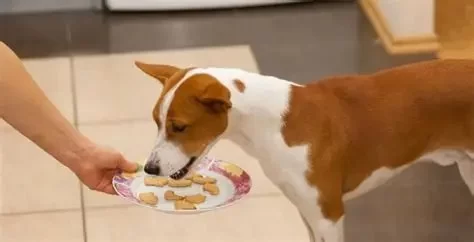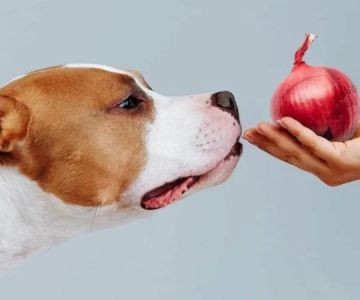- can-dogs-eat-crackers-safely - Can Dogs Eat Crackers Safely?
- types-of-crackers-and-ingredients-to-watch - Types of Crackers and Ingredients to Watch
- nutritional-impact-of-crackers-on-dogs - Nutritional Impact of Crackers on Dogs
- how-much-is-too-much - How Much Is Too Much: Moderation and Portion Size
- real-case-what-happened-to-bella - Real Case: What Happened to Bella After a Crackers Binge
- safer-alternatives-and-recommendations - Safer Alternatives and Recommendations for Pet Parents
- when-to-seek-veterinary-help - When to Seek Veterinary Help
1. Can Dogs Eat Crackers Safely?
As pet owners, we often find ourselves sharing our snacks with our furry companions. But a question many ask is: can dogs eat crackers? The answer is: yes, in small amounts and with certain conditions. While most plain crackers are not toxic to dogs, they are not exactly healthy either. Crackers are typically high in sodium and may contain ingredients that aren’t suitable for canine consumption, such as garlic, onion powder, or excessive artificial flavors.
So while an occasional plain cracker might not cause harm, frequent feeding can lead to health complications. Understanding the context and ingredients behind that seemingly innocent treat is critical.
2. Types of Crackers and Ingredients to Watch
2.1. Plain Crackers vs. Flavored Crackers
Plain, unsalted crackers are generally the least harmful. They contain simple ingredients like flour and water. However, flavored or stuffed crackers (like cheese, herb, or spicy varieties) can pose risks due to seasonings or additives. Onion and garlic are particularly toxic to dogs and can damage red blood cells over time.
2.2. Salt and Preservatives
Many commercial crackers are high in sodium—a major red flag for dogs. Excessive salt can lead to dehydration and, in severe cases, sodium ion poisoning. Watch out for long shelf-life crackers packed with preservatives, as some of these chemicals can irritate a dog’s digestive tract.
2.3. Sugar and Sweet Crackers
Sweet crackers or those containing xylitol (a common artificial sweetener) should be avoided entirely. Xylitol is highly toxic to dogs and can cause a dangerous drop in blood sugar levels or even liver failure.
3. Nutritional Impact of Crackers on Dogs
3.1. Empty Calories
Crackers offer minimal nutritional value to dogs. They are typically filled with carbohydrates and offer little in terms of protein or essential fats. Feeding crackers regularly can contribute to weight gain, especially in less active or older dogs.
3.2. Risk of Obesity and Heart Issues
Too many salty or fatty treats like crackers can lead to long-term health risks, including heart disease, high blood pressure, and pancreatitis. Dogs with preexisting conditions, such as kidney disease or obesity, should steer clear entirely.
3.3. Digestive Discomfort
Dogs aren’t used to processed grains or additives. Crackers can upset their stomach, causing bloating, gas, or diarrhea—particularly if given in large quantities or with complex toppings like cheese spreads.
4. How Much Is Too Much: Moderation and Portion Size
4.1. Occasional Treats, Not Regular Snacks
One or two plain, unsalted crackers once in a while are unlikely to hurt your dog. However, crackers should never replace regular dog food or balanced snacks. Moderation is key—think of crackers more as a rare reward than a daily indulgence.
4.2. Portion Control by Size
Smaller dogs have lower tolerance for salt and carbs. If you’re giving a treat, break the cracker into tiny pieces. For large breeds, the risk is slightly lower, but overfeeding is still a danger.
5. Real Case: What Happened to Bella After a Crackers Binge
Take the case of Bella, a 4-year-old golden retriever from Round Rock, Texas. One afternoon, Bella snuck into her family’s pantry and ate nearly a full sleeve of buttery crackers. Within hours, she began vomiting and was unusually lethargic. Her concerned owner rushed her to Hidden Brook Veterinary, where she was treated for salt poisoning and mild dehydration.
Thanks to quick veterinary care, Bella made a full recovery. But her story is a cautionary tale: even snacks that seem harmless can turn into serious health issues if left unchecked. Always store human food safely and consult your vet if your dog consumes anything unusual.
6. Safer Alternatives and Recommendations for Pet Parents
6.1. Healthy Snacks Your Dog Will Love
Instead of crackers, consider offering your dog crunchy alternatives like baby carrots, apple slices (without seeds), or dehydrated sweet potato treats. These options are not only safe but provide nutritional benefits like fiber and vitamins.
6.2. Homemade Dog-Friendly Crackers
If you want to share a snack moment with your dog, try baking simple dog-safe crackers at home using oats, peanut butter (xylitol-free), and pumpkin puree. They’re healthier and tailored to your dog’s dietary needs.
6.3. Consult with Experts
Not all dogs have the same tolerance for human foods. At Hidden Brook Veterinary, our team can help you build a diet that matches your dog’s health, lifestyle, and preferences. Personalized guidance ensures your pet enjoys treats safely and healthily.
7. When to Seek Veterinary Help
7.1. Signs of Trouble
If your dog shows any of the following symptoms after eating crackers, seek veterinary assistance immediately: vomiting, diarrhea, lethargy, loss of appetite, excessive thirst, or seizures. These could indicate salt poisoning, allergic reaction, or digestive blockage.
7.2. Better Safe Than Sorry
Even if your dog appears fine, contacting your vet after an accidental snack binge is wise. Early intervention can prevent minor discomfort from escalating into a serious condition. For pet owners in the Central Texas area, Hidden Brook Veterinary offers expert support with a compassionate approach.












